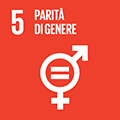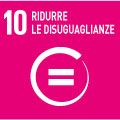- Docente: Clarissa Ricci
- Crediti formativi: 6
- SSD: L-ART/03
- Lingua di insegnamento: Inglese
- Modalità didattica: Convenzionale - Lezioni in presenza
- Campus: Bologna
- Corso: Laurea Magistrale in Arti visive (cod. 9071)
Conoscenze e abilità da conseguire
Students acquire the methodology to understand and critically analyse the Art System. In particular, they develop the methodological tools to carry out independent research and they understand and recognize the historical and current roles of the System’s protagonists: artists, critics, collectors, museums, galleries, fairs.
Contenuti
This course outlines the formation of the contemporary art system and its current configuration. The introductory lessons focus on the definition of what an art system is. Attention is also given to the debate around the notion of ‘emerging art’, highlighting how labels are means of defining a system and the main responses to this.
The course outlines the contemporary art system as a value system, based on the circulation of art and its legitimation. Each lesson focuses on a specific agent of this system (ex. the gallery, the biennial, the fair, the dealer, the journal, and the collector). The notion of agency is thus examined through the practices and underling both specificities and contradictions. The art as a system is also examined as in relation to other systems, thus taking into account systems of images, politics, power, culture, and language. Particular attention is given to understanding the art market and how to conduct research. Lessons focus on specific topics analysed through case studies and student are expected to discuss the proposed readings with the scope of developing their research abilities through critical thinking.
A relevant part of the course is devoted to understanding the circulation and distribution of contemporary art in a globalised world. Lessons thus are also devoted to the history of biennials and the process of biennalization.
The Course will touch upon the following topics:
- What is a System: System Theory, the Art World, Fields of Cultural Production, Networks
- Value: Economic and social Value, Reputation, Ranking Systems
- Canvases and Careers Today: Interaction between gallery, artists, critic and curators
- Exhibitions: Institutions, Foundations, Museum, Galleries, Institutional Critique.
- Artists between Celebrity Culture and Market Reflexive Gestures
- Circulation and Distribution in a Globalised World: Biennials and Art Fairs
- Mediators: Dealers, Curators, Art Journals,
- Collectors: Art Investment, Patronage and Grants
- Public: Gaze and Spectatorship, Social Media
- Market: Auction Houses, Primary/Secondary Market, Sales, Provenance Research, Contracts
- Nomenclature: Avantgarde, Emergent Art, Young, Contemporaneity, Established
- Handling Art: Insurance, Shipping, Copyright, Due Diligence
Testi/Bibliografia
The bibliography for the course takes a multidisciplinary approach and features excerpts of artists, art historians, economists, philosophers, scientists, and sociologists, including Bruce Altshuler, Tony Bennet, Howard Becker, Pierre Bourdieu, Daniel Buren, Arthur Danto, Andrea Fraser, George Dickie, Georg Franck, Alain Quemin, Martha Rosler, Terry Smith, Hito Steyerl, Olav Velthuis, and others.
The required readings for each lesson can be downloaded by students from “Teaching resources on Virtuale”.
Non-attending students are invited to contact the professor well in advance to have indications on further readings and to discuss the assignment topic.
Metodi didattici
Lectures and seminar meetings
Restricted places for incoming exchange students:
Places for incoming exchange students in this teaching activity are limited and are primarily reserved to students enrolled in art related programmes at their home university.
To check availability, please write to amac@unibo.it
Modalità di verifica e valutazione dell'apprendimento
Oral Exam
Learning is assessed taking into account performance on an oral exam which is aimed at verifying the student’s knowledge of the material covered in the lessons and the readings assigned during the first part of the course. Therefore, questions will be asked both on the readings in the bibliography and on notes taken during the lessons.
Strumenti a supporto della didattica
Interactive presentations, videos and PowerPoints.
Orario di ricevimento
Consulta il sito web di Clarissa Ricci
SDGs




L'insegnamento contribuisce al perseguimento degli Obiettivi di Sviluppo Sostenibile dell'Agenda 2030 dell'ONU.
